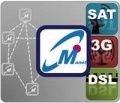In this page you can search all ARTES except ARTES 20 IAP, which can be found on Business Applications - Projects.
Please click on the + symbol to expand the Filter By ARTES Elements to narrow your search. If you are looking for a specific element select from the list provided and click on the Apply button to start the search and display the results.
Displaying 801 - 840 of 1710
SYPRUS

Status date:
Prime Contractor
Subcontractors
SatcomWeather
Status date:
Prime Contractor
Selectable Sub-Reflector Antenna
Status date:
Prime Contractor
Subcontractors
ESTARR
Status date:
Prime Contractor
Subcontractors
Ka-METROCAL

Status date:
Prime Contractor
Subcontractors
ASTROgyro
Status date:
Prime Contractor
Subcontractors
Tracking System for antennas with boom

Status date:
Prime Contractor
Subcontractors
RFMLI
Status date:
Prime Contractor
Subcontractors
HPLO
Status date:
Prime Contractor
Subcontractors
Evaluation of Supercapacitors and Impacts at System Level

Status date:
Prime Contractor
Subcontractors
MESH

Status date:
Prime Contractor
Subcontractors
SiGe VCO Block
Status date:
Prime Contractor
Subcontractors
SCORSESE
Status date:
Prime Contractor
Digital Controller for Power Management

Status date:
Prime Contractor
MultiBeam-RRM
Status date:
Prime Contractor
Subcontractors
SA Building Blocks

Status date:
Prime Contractor
Subcontractors
Lightweight RF Power Cable with High Phase Stability
Status date:
Prime Contractor
Subcontractors
Mobile ad hoc networks with satellite access for public safety operations

Status date:
Prime Contractor
Subcontractors
MOFINT

Status date:
Prime Contractor
Subcontractors
Satellite extension of xDSL copper wire based networks
Status date:
Prime Contractor
Subcontractors
Frequency Flexible M2M Terminal Modem Development

Status date:
Prime Contractor
EUROPEAN FUEL BLEND DEVELOPMENT

Status date:
Prime Contractor
Subcontractors
LCTs for future GEO Constellations
Status date:
Prime Contractor
Subcontractors
Research and Development of Next-Generation GNSS Receivers (4G)

Status date:
Prime Contractor
Subcontractors
Reconfigurable Antenna Optics
Status date:
Prime Contractor
Integrated Tool for Reflector Antenna Design, Antenna Farm Scattering, and Interference Prediction
Status date:
Prime Contractor
Subcontractors
VIPS
Status date:
Prime Contractor
Subcontractors
Aeronautical Satellite Communications Channel Characteristics
Status date:
Prime Contractor
Subcontractors
DEVELOPMENT OF A LARGE KU-BAND SINGLE FEED PER BEAM ARRAY
Status date:
Prime Contractor
Subcontractors
KuDGR
Status date:
Prime Contractor
Subcontractors
Digital Transparent Processor (DTP) for Flexible Payloads
Status date:
Prime Contractor
Subcontractors
TOBOGGAN
Status date:
Prime Contractor
Additive manufacturing for geostationary telecommunications satellites
Status date:
Prime Contractor
Subcontractors
Compact Ku-Band OMUX with a high number of channels
Status date:
Prime Contractor
Subcontractors
NF-P/L Study

Status date:





